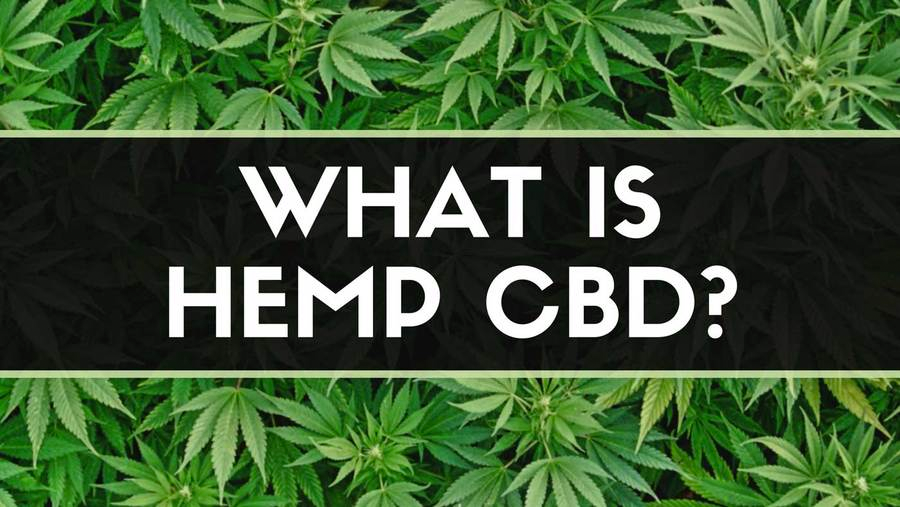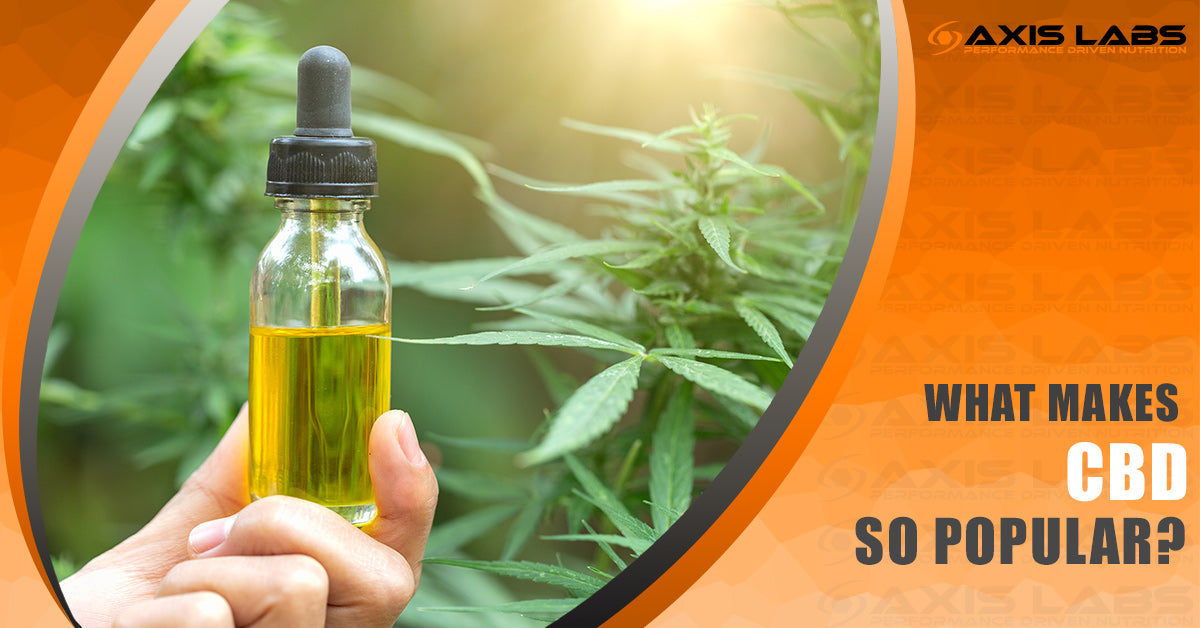Your Cart is Empty
FREE SHIPPING ON ORDERS +$49
FREE SHIPPING ON ORDERS +$49
CBD From Hemp: What Is It and Can it Help me
5 min read

CBD (cannabidiol) is among 80+ cannabinoid substances in cannabis plants. Different from the primary psychedelic cannabinoid in cannabis, tetrahydrocannabinol (THC), CBD doesn’t elicit feelings of euphoria, nor is it intoxicating.
Intensive medical studies are still needed to evaluate the clinical capacity of CBD for particular conditions. However, pre-clinical research (including both cell culture and animal studies) has revealed CBD’s vast potential therapeutic benefits, including the following properties:
- Anti-inflammatory and antioxidant
- Neuroprotective
- Anti-seizure
- Analgesic
- Anxiolytic
- Addiction treatment
Cannabinoids enact physiological effects generally by binding with CB1 and CB2 receptors on cells throughout the body and brain. Feelings of euphoria induced by THC are triggered by activating CB1 receptors.
CBD has an extremely low binding potential with CB1 receptors (100-fold lower than THC) and when it binds the effects are negligible. There is likewise growing proof that CBD interacts with components of the brain, and that this may contribute to its healing effects.[1]
Is CBD Safe?
Before moving on, let’s make it clear that CBD is highly safe. In spite of their chemical structure similarity, CBD binds with cannabinoid receptors weakly, even at extremely high doses (100 times that of THC), and the modifications in cognitive function and sensory perception induced by THC are not seen with CBD. The different pharmacological effects of CBD mean it has an entirely different safety profile from THC.
Amazingly, a review of 25 studies on the safety profile of CBD did not identify any significant adverse effects across a wide variety of doses, including extremely high dosage regimens, using numerous routes of administration.[2]
In fact, the World Anti-Doping Agency (WADA) has removed CBD from hemp oil (which is found in Axis Labs CBD products) from the list of banned substances. This means athletes subject to WADA no longer have to worry about using CBD 500 and CBD+Relief. In fact, athletes and gym-goers alike serve to benefit highly from our hemp-based CBD products, especially for recovery from strenuous training.
Does it Matter Where CBD Comes from?
Hemp refers to non-psychoactive (less than 1% THC) varieties of Cannabis sativa L. Hemp and marijuana both derive from the same cannabis species, but are genetically unique and further distinguished by chemical makeup and cultivation methods.
CBD from hemp is just as effective as CBD from other varieties of cannabis. Their physiological benefits are identical. The 2014 Farm Bill allows sales of hemp in 50 states in the U.S. as long the product is less than 0.3% THC.
Read on as this article dives deep into the pertinent research behind CBD and why it’s time to reconsider the many potential benefits of this chemical.
Preclinical and Medical Evidence of CBD Benefits
Anti-Seizure Properties
Numerous studies from the past 20+ years have shown that CBD has anti-seizure activity, especially by decreasing the intensity of seizures.[3,4] Moreover, myriad case studies and anecdotal findings suggest that CBD might be an alternative treatment for youth with epilepsy.[5,6]
The National Institute on Drug Abuse (NIDA) is now teaming up with the National Institute on Neurological Disorders and Stroke to examine the mechanisms behind CBD for epilepsy treatment. In addition, medical trials are presently underway evaluating the effectiveness CBD extracts for treating childhood epilepsy.
Anti-Inflammatory and Neuroprotective Properties
CBD appears to enact neuroprotective benefits in cell culture research and in animal studies of numerous neurodegenerative conditions, consisting of Parkinson's disease, Alzheimer's disease, glutamate intoxication, multiple sclerosis (MS), stroke, and neurodegeneration triggered by alcoholism.[7]
Nabiximols (Sativex), which includes CBD and THC in a 1:1 ratio, has been authorized in much of Europe (and other countries) for treating spasticity connected with MS. However, it remains unapproved in the United States; nevertheless, trials are in the works, and current studies report that nabiximol minimizes the seriousness of spasticity in MS patients.[8] Further research suggests that subjects with Parkinson's experience significant improvements in well-being from CBD.[9]
Analgesic (Pain-Fighting) Benefits
Numerous scientific trials demonstrate the effectiveness of CBD for neuropathic pain and rheumatoid arthritis.10 The inflammation-fighting aspect of CBD is postulated to mediate these analgesic benefits. Extant literature research also suggests that cannabinoids and opioids have unrelated mechanisms for lowering pain and their benefits might be additive; this means that combination therapies might be developed that have lower addictive risks in comparison to existing opioid interventions.[11]
Anxiolytic Benefits
CBD has demonstrated restorative properties in a variety of animal studies on stress and anxiety by improving behavioral and physiological symptoms.[12] Furthermore, CBD was shown to minimize anxiety in human subjects with social anxiety, even when exposed to a demanding public speaking role.[13] Other findings suggest that CBD can help humans forget traumatizing memories.14 The anxiolytic benefits of CBD seem to be regulated by 5-HT1A (serotonin) receptors, although the exact mechanism is still under investigation.
Take-Home Points
To recap, CBD (especially from hemp) is an extremely safe substance, and its therapeutic properties are vast, including:
- Anti-inflammatory and antioxidant
- Neuroprotective
- Anti-seizure
- Analgesic
- Anxiolytic
- Addiction treatment
The research herein suggests that as little as 5 mg (and up to 50 mg) of CBD per day may have therapeutic benefits.
As research grows on the potential benefits of CBD, you can expect to see more athletes and everyday fitness enthusiasts utilizing it for recovery, pain relief, and even just general well-being.
References
- Pertwee RG. The diverse CB1 and CB2 receptor pharmacology of three plant cannabinoids: Δ9-tetrahydrocannabinol, cannabidiol and Δ9-tetrahydrocannabivarin. Br J Pharmacol. 2008 Jan; 153(2): 199–215.
- Bergamaschi et al. Safety and side effects of cannabidiol, a Cannabis sativa constituent. Curr Drug Saf. 2011 Sep 1;6(4):237-49.
- Jones et al. Cannabidiol exerts anti-convulsant effects in animal models of temporal lobe and partial seizures. Seizure. 2012 Jun;21(5):344-52.
- Consroe P and Wolkin A. Cannabidiol--antiepileptic drug comparisons and interactions in experimentally induced seizures in rats. J Pharmacol Exp Ther. 1977 Apr;201(1):26-32.
- Porter BE and Jacobson C. Report of a parent survey of cannabidiol-enriched cannabis use in pediatric treatment-resistant epilepsy. Epilepsy & Behavior 29 (2013) 574–577.
- Press et al. Parental reporting of response to oral cannabis extracts for treatment of refractory epilepsy. Epilepsy & Behavior 45 (2015) 49–52.
- Iuvone et al.Neuroprotective effect of cannabidiol, a non-psychoactive component from Cannabis sativa, on beta-amyloid-induced toxicity in PC12 cells. J Neurochem. 89(1):134-41. (2004).
- Pryce et al. Neuroprotection in Experimental Autoimmune Encephalomyelitis and Progressive Multiple Sclerosis by Cannabis-Based Cannabinoids. J Neuroimmune Pharmacol. 2014 Dec 24.
- Chagas et al. Effects of cannabidiol in the treatment of patients with Parkinson's disease: an exploratory double-blind trial. J Psychopharmacol. 28(11):1088-98. (2014).
- Russo EB. Cannabinoids in the management of difficult to treat pain. Therapeutics and Clinical Risk Management. 4(1):245-259.(2008).
- Iskedjian et al. Meta-analysis of cannabis based treatments for neuropathic and multiple sclerosis-related pain. Curr Med Res Opin. 23(1):17-24.(2007).
- Guimaraes et al. Antianxiety effect of cannabidiol in the elevated plus-maze. Psychopharmacology (Berl) 100:558–559 (1990).
- Bergamaschi et al. Cannabidiol reduces the anxiety induced by simulated public speaking in treatment-naive social phobia patients. Neuropsychopharmacology 2011;36:1219–1226.
- Campos et al. Involvement of serotonin-mediated neurotransmission in the dorsal periaqueductal gray matter on cannabidiol chronic effects in panic-like responses in rats. Psychopharmacology (Berl). 2013 Mar;226(1):13-24.
Also in Blog
Subscribe
Sign up to get the latest on sales, new releases and more …








